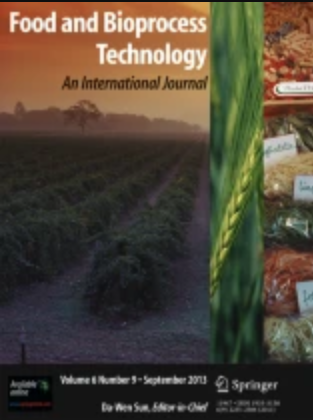Noval Drying Technologies Applicability of Cistanche Deserticola: Improving Drying Behavior and Quality
Abstract
The applicability of four different drying technologies (hot air drying (HAD), hot air impingement drying (HAID), medium-short wave infrared drying (MSWID), and pulsed vacuum drying (PVD)) on drying characteristic and physicochemical of Cistanche deserticola (C. deserticola) were explored. Compared HAD, HAID, and MSWID, PVD can improve moisture mobility and form beneficial microporous channels for moisture migration inside C. deserticola, thus shortening drying time by 12.5% to 30.0% and increasing rehydration ratio by 10.82% to 29.29%, while better preserving the quality. Low-field nuclear magnetic resonance (LF-NMR) further demonstrated that PVD could significantly improve the moisture freedom and mobility of C. deserticola. Pearson correlation analysis confirmed the PVD dried samples showed the best antioxidant activity with the highest content of active ingredients (echinoside, acteoside and alcohol-soluble extracts). Furthermore, Fourier transform infrared (FTIR) analysis proved the differences among the four dried C. deserticola samples. This study clarified the optimal techniques for the drying of C. deserticola from the perspectives of drying efficiency and quality perspectives. A theoretical basis and technical support for promoting high-quality development of C. deserticola processing and comprehensive evaluation of differences products were provided.
Graphical Abstract

 求助内容:
求助内容: 应助结果提醒方式:
应助结果提醒方式:


